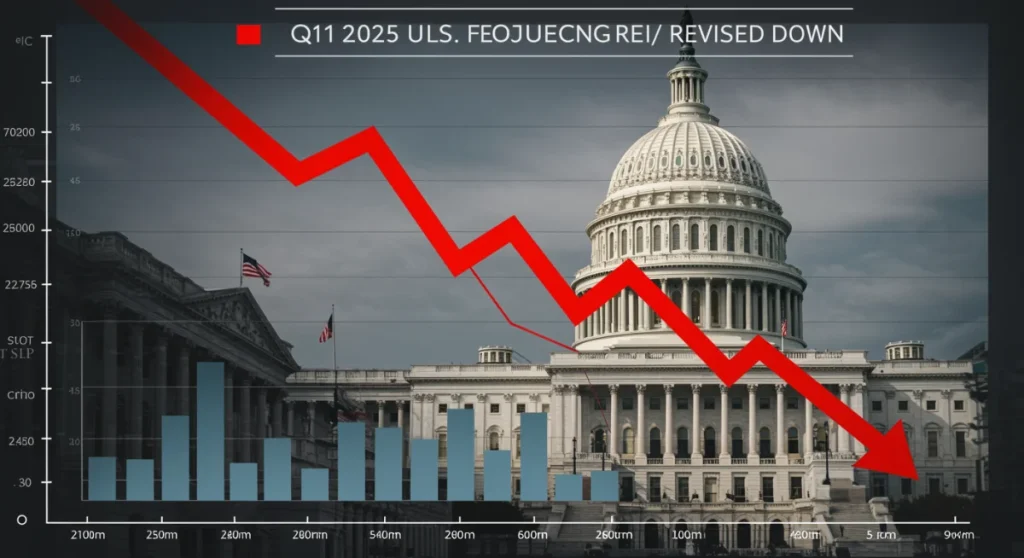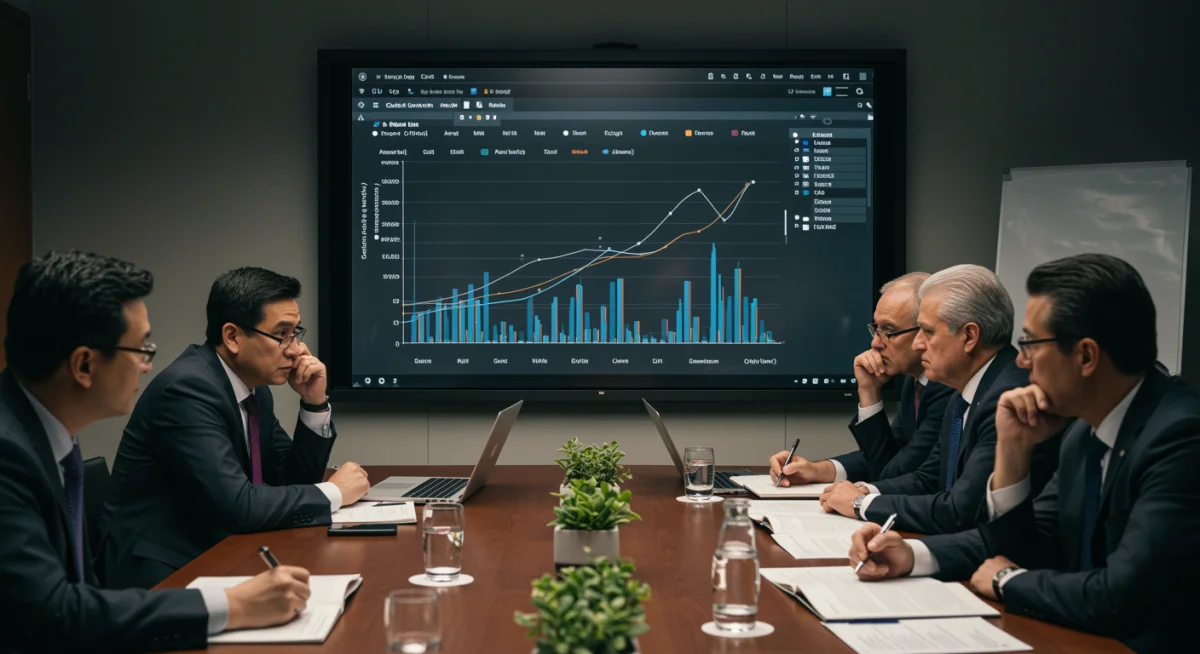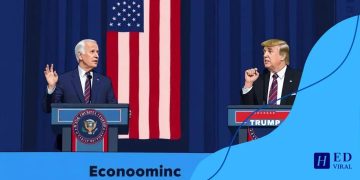U.S. Economic Growth Projections Q1 2025 Revised Down

The U.S. economic growth projection for Q1 2025 has been revised downward by 1.5%, signaling potential challenges for businesses and consumers, driven by evolving market conditions and policy adjustments.
An Urgent Alert: U.S. Economic Growth Projections for Q1 2025 Revised Downward by 1.5% has sent ripples through financial markets and policy circles. This significant adjustment demands immediate attention, as it directly impacts investment strategies, business planning, and the everyday financial outlook for millions of Americans. What factors are driving this shift, and how should we prepare?
Understanding the Downward Revision
The recent announcement of a 1.5% downward revision in U.S. economic growth projections for Q1 2025 has sparked considerable concern. This adjustment is not merely a statistical anomaly; it reflects a confluence of underlying economic pressures and evolving global conditions that warrant closer examination. Understanding the genesis of this revision is crucial for comprehending its potential impact.
Economic forecasts are dynamic, constantly adapting to new data and unforeseen events. This particular revision stems from a comprehensive re-evaluation of several key indicators. Analysts are scrutinizing everything from consumer spending patterns to manufacturing output and international trade balances. The initial robust projections appear to have been overly optimistic when confronted with the latest economic realities.
Key Factors Influencing the Revision
Several critical elements have contributed to this adjusted outlook. These factors are interconnected, creating a complex web of influences that collectively point towards a slower growth trajectory.
- Persistent Inflationary Pressures: While some relief has been observed, inflation remains a nagging concern, eroding purchasing power and leading consumers to exercise greater caution in their spending.
- Higher Interest Rates: The Federal Reserve’s sustained hawkish stance on interest rates, aimed at curbing inflation, has increased borrowing costs for businesses and individuals, thereby slowing investment and consumption.
- Global Economic Slowdown: Weakening growth in major trading partners and geopolitical tensions have reduced demand for U.S. exports and disrupted supply chains, impacting domestic economic activity.
- Labor Market Dynamics: Despite low unemployment, signs of cooling in the labor market, such as a slight increase in jobless claims and a moderation in wage growth, suggest a potential softening of consumer confidence.
The cumulative effect of these factors has led economic modelers to recalibrate their expectations. This is a sober reminder that economic health is a delicate balance, susceptible to both domestic policy decisions and international headwinds. The revision serves as a critical signal for policymakers and businesses alike to reassess their strategies for the coming year.
Impact on Businesses and Industries
A downward revision in the U.S. economic growth forecast for Q1 2025 carries substantial implications for businesses across various sectors. Companies must now navigate an environment characterized by potentially weaker consumer demand, tighter credit conditions, and increased uncertainty. This necessitates a strategic re-evaluation of operational plans, investment decisions, and workforce management.
Smaller businesses, often more susceptible to economic fluctuations, may find themselves particularly vulnerable. Access to capital could become more challenging, and maintaining profitability in a slower growth environment will require heightened efficiency and cost control. Larger corporations, while often possessing greater reserves, will still face pressure to meet earnings expectations amidst a more subdued economic backdrop.
Sector-Specific Challenges
The impact of this revised outlook will not be uniform across all industries. Some sectors are inherently more sensitive to economic downturns or slower growth periods than others.
- Retail and Consumer Goods: Discretionary spending often takes the first hit during economic slowdowns, impacting sales volumes and profit margins for retailers and consumer product manufacturers.
- Manufacturing: Reduced demand, both domestic and international, coupled with ongoing supply chain issues, could lead to lower production levels and potential job cuts in the manufacturing sector.
- Real Estate: Higher interest rates and decreased consumer confidence typically cool the housing market, affecting both residential and commercial real estate transactions and development.
- Technology: While often resilient, tech companies may see a slowdown in enterprise spending and venture capital investment, potentially leading to hiring freezes or layoffs.
Businesses are now compelled to adapt their strategies to this new reality. This could involve delaying expansion plans, optimizing supply chains for resilience rather than just efficiency, or focusing on core product offerings that are less susceptible to economic volatility. Proactive measures will be essential for weathering this period of anticipated slower growth.
Consumer Spending and Personal Finances
The revised U.S. economic growth projections for Q1 2025 directly influence consumer behavior and personal finances. A slower economy typically translates into greater caution among households, affecting spending habits, savings rates, and overall financial security. Understanding these dynamics is crucial for individuals looking to manage their money effectively in the coming months.
When economic growth slows, job security can become a more prominent concern, even if unemployment rates remain relatively low. This heightened awareness often leads consumers to cut back on non-essential purchases and prioritize saving. The psychological impact of negative economic news can be just as significant as the tangible effects, fostering a sense of uncertainty that influences financial decisions.
Strategies for Financial Resilience
In anticipation of a potentially softer economic period, individuals can adopt several strategies to bolster their personal financial resilience. These measures can help mitigate the impact of slower growth and protect against unforeseen challenges.
- Review and Adjust Budgets: Scrutinize monthly expenditures to identify areas where spending can be reduced, focusing on essential needs and cutting back on discretionary items.
- Increase Emergency Savings: Aim to build a stronger financial cushion, ideally covering three to six months of living expenses, to provide a buffer against unexpected job loss or income reduction.
- Manage Debt Proactively: Prioritize paying down high-interest debt, such as credit card balances, to reduce financial burden, especially if interest rates remain elevated.
- Diversify Income Streams: Explore opportunities for side gigs or additional skills that could provide alternative income sources, enhancing financial stability.
The economic outlook directly affects the average American’s wallet. Being prepared means making informed choices about spending, saving, and investing. While the revision indicates a challenging period, it also presents an opportunity for individuals to re-evaluate and strengthen their financial positions.

Policy Responses and Federal Reserve Stance
In response to the downward revision of U.S. economic growth projections for Q1 2025, policymakers, particularly the Federal Reserve, are under increased scrutiny. Their actions will play a pivotal role in shaping the economic trajectory and managing potential headwinds. The balance between combating inflation and supporting growth is a delicate one, requiring careful consideration and strategic adjustments.
The Federal Reserve’s primary mandate includes maintaining price stability and maximizing employment. With inflation still a concern and growth projections softening, the Fed faces a complex dilemma. Aggressive rate hikes might further dampen economic activity, while premature easing could reignite inflationary pressures. This tightrope walk defines the current monetary policy environment.
Potential Policy Adjustments
Various policy responses could be considered by both fiscal and monetary authorities to address the revised outlook. These actions aim to stabilize the economy and foster a more favorable environment for recovery.
- Federal Reserve’s Interest Rate Policy: The Fed might signal a pause in rate hikes, or even a potential pivot towards rate cuts later in the year, if economic data suggests a significant slowdown and inflation shows sustained moderation.
- Government Fiscal Stimulus: While less likely in an inflationary environment, targeted fiscal measures such as infrastructure spending or tax incentives could be considered to stimulate specific sectors or support vulnerable populations.
- Regulatory Adjustments: Streamlining regulations for businesses, particularly small and medium-sized enterprises, could reduce operational costs and encourage investment, fostering growth.
- International Trade Policies: Efforts to resolve trade disputes and strengthen international partnerships could help mitigate global economic headwinds and boost U.S. export performance.
The coming months will be critical for observing how these policy considerations translate into concrete actions. The effectiveness of these responses will largely determine the depth and duration of the anticipated economic slowdown. Transparency and clear communication from policymakers will be essential for maintaining market confidence and guiding public expectations.
Investment Strategies in a Shifting Landscape
The downward revision of U.S. economic growth projections for Q1 2025 necessitates a re-evaluation of investment strategies. Investors, from individual savers to institutional funds, must adapt their portfolios to a potentially more challenging economic environment. Prudence, diversification, and a long-term perspective become even more critical when growth prospects dim.
Market volatility often increases during periods of economic uncertainty. This can present both risks and opportunities. While some sectors may face headwinds, others might prove more resilient or even thrive. The key is to avoid panic and make informed decisions based on a thorough understanding of the evolving economic landscape and individual financial goals.
Adapting Investment Portfolios
In light of the revised outlook, investors should consider several adjustments to their strategies. These recommendations are geared towards protecting capital and identifying potential growth areas.
- Diversify Across Asset Classes: Ensure a balanced portfolio that includes a mix of equities, fixed income, real estate, and potentially alternative investments to spread risk.
- Focus on Defensive Sectors: Consider investments in sectors that tend to perform well even during economic slowdowns, such as utilities, healthcare, and consumer staples.
- Review Fixed Income Holdings: With interest rates potentially stabilizing or even declining, re-evaluate bond portfolios for duration and credit quality.
- Long-Term Perspective: Resist the urge to make drastic, emotional decisions. Economic cycles are natural, and a long-term investment horizon often smooths out short-term volatility.
Engaging with a financial advisor to tailor strategies to personal circumstances is always advisable. The revised growth forecast is a signal to be vigilant, but not to abandon sound investment principles. Strategic adjustments can help investors navigate the complexities of a slower growth period and position themselves for future recovery.
Global Economic Context and Interdependencies
The U.S. economic growth projections for Q1 2025 are not an isolated phenomenon; they are deeply intertwined with the broader global economic context. The interconnectedness of modern economies means that trends in one major region can have significant ripple effects worldwide. Understanding these interdependencies is crucial for a complete picture of the revised outlook.
Global trade, supply chains, and financial markets create a complex web where economic performance in countries like China, the Eurozone, and emerging markets can directly influence U.S. economic health. Weakness abroad can reduce demand for American exports, disrupt crucial supply lines, and even impact investor confidence domestically. Similarly, a slower U.S. economy can affect global growth.
International Factors and Their Influence
Several international factors are currently shaping the global economic landscape and contributing to the U.S. growth revision. These external pressures add another layer of complexity to the economic forecast.
- China’s Economic Slowdown: Challenges in China’s property sector, coupled with weaker consumer demand, impact global manufacturing and commodity prices, affecting U.S. trade partners.
- European Energy Crisis: Geopolitical tensions and high energy costs continue to weigh on European economies, potentially reducing their import demand from the U.S.
- Emerging Market Volatility: Fluctuations in commodity prices and currency values in emerging markets can create instability, impacting global investment flows and risk perception.
- Geopolitical Tensions: Ongoing conflicts and trade disputes introduce uncertainty, deterring investment and disrupting established economic relationships worldwide.
The U.S. economy does not operate in a vacuum. The 1.5% downward revision for Q1 2025 reflects not only domestic challenges but also the significant influence of these global forces. A comprehensive understanding of these international dynamics is essential for both policymakers and businesses as they chart a course through this period of economic recalibration.
| Key Point | Brief Description |
|---|---|
| Growth Revision | U.S. Q1 2025 economic growth projections revised downward by 1.5%. |
| Driving Factors | Persistent inflation, high interest rates, global slowdown, and labor market shifts. |
| Impact Areas | Affects businesses, consumer spending, investment strategies, and policy responses. |
| Outlook & Strategy | Requires proactive business adjustments, financial prudence for consumers, and adaptive policy. |
Frequently Asked Questions About the Q1 2025 Economic Outlook
It indicates that economists now expect the U.S. economy to grow 1.5% less than previously anticipated in the first quarter of 2025. This suggests a slower pace of economic activity, potentially affecting job creation, corporate profits, and overall market sentiment.
Key factors include persistent inflationary pressures impacting consumer purchasing power, the sustained high interest rate environment by the Federal Reserve, a general slowdown in the global economy, and subtle shifts in labor market dynamics suggesting a cooling trend.
Households may experience increased pressure on discretionary spending, potentially tighter credit conditions, and a greater emphasis on financial prudence. Job security could become a more prominent concern, leading to increased savings and revised budgeting to mitigate risks.
The Federal Reserve might consider pausing further interest rate hikes, or even contemplating rate cuts later in the year, if economic data points to a significant slowdown and inflation shows consistent signs of moderation. Their response will balance growth support with inflation control.
Investors are advised to review their portfolios for diversification, consider defensive sectors, and maintain a long-term perspective. While not a call for panic, it’s a signal to ensure strategies are robust enough to navigate potential market volatility and slower growth periods effectively.
Conclusion
The downward revision of U.S. economic growth projections for Q1 2025 by 1.5% signals a critical juncture for the American economy. This adjustment, driven by a complex interplay of domestic and global factors, underscores the need for vigilance and adaptability across all sectors. Businesses must recalibrate strategies, consumers should prioritize financial resilience, and policymakers face the delicate task of balancing inflation control with growth stimulation. While challenges lie ahead, an informed and proactive approach will be instrumental in navigating these economic shifts and fostering stability for the future.






